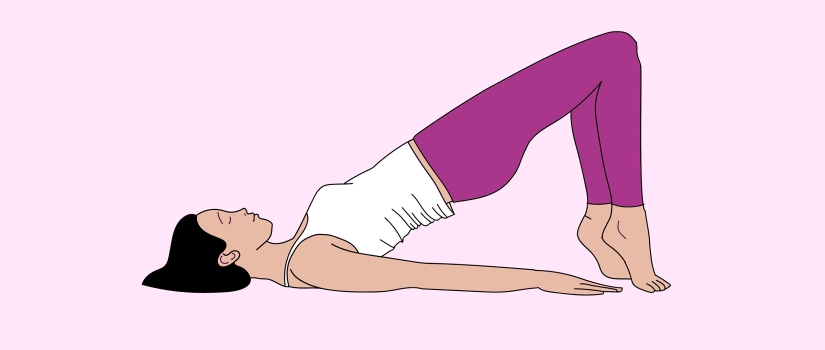Why It Doesn't Work: 4 Mistakes in Kegel Exercises
Categories: Health and Medicine | Healthy lifestyle | Lifestyle | People | Society | Sport | World
By Vika https://pictolic.com/article/why-it-doesnt-work-4-mistakes-in-kegel-exercises.htmlWhy are Kegel exercises so beneficial for women? TOP 4 mistakes that almost all beginners make, and which negate the entire effect of training intimate muscles
Every woman has heard about Kegel exercises. This is a simple yet effective pelvic floor-strengthening compound recommended during pregnancy and childbirth. In addition, Kegel exercises help to relax the muscles of the vagina and make them more elastic. So it, among other things, also improves the quality of sex. You can do the exercises yourself, anywhere, and completely unnoticed by others. However, it often happens that their effect of them is not visible. And here the problem is not in the muscles, but in the main mistakes that many women make during training.
6 PHOTOS

1. What are the benefits of Kegel exercises for women?
Gymnastics to strengthen the muscles of the pelvic floor was not invented by a fitness trainer or a sex therapist. This is a set of exercises that was developed by gynecologist Alfred Kegel for the prevention and treatment of the most common female problems. The fact is that with age, female muscles weaken and lose their elasticity. Therefore, ladies over 40 are familiar with problems such as prolapse of the uterus, bladder, and intestines, as well as mild incontinence (leakage) of urine during sneezing or coughing.
Only regular training of the pelvic muscles can prevent these problems. Therefore, Alfred Kegel came up with several exercises that will keep this area in good shape. In the course of observing the patients, the doctor came to the conclusion that his training is also very effective during pregnancy, preparation for the birth of a baby, and the recovery of a woman after childbirth. A separate bonus is new, more vivid sensations during sex. Kegel exercises strengthen the muscles of the vagina, increase their elasticity and improve blood flow to the vagina.

2. Mistakes that spoil the effect of Kegel exercises
The principles of performing Kegel exercises are quite simple: they are based on alternating tension and relaxation of the pelvic floor muscles. Due to the fact that these muscles are inside, you can do gymnastics not only at home but even in the office, on public transport, or in line. If you bring training to automatism, it will never occur to others that you are engaged in such a delicate matter. And it will take no more than 5-10 minutes.
You can read about exactly how to perform Kegel gymnastics, how to prepare for it, and how to determine the muscles that should be involved during training, here. We will talk about the main mistakes that almost all women make during classes. These mistakes not only delay the results but can lead to muscle hypertonicity and negate the full effect of the exercises.

3. Mistake 1. Jellyfish
The main mistake of all beginners is the excessive intensity of muscle movement without relaxing them. To achieve results faster, a woman keeps her muscles taut all the time and performs exercises in this state. Figuratively, this resembles the movement of a frightened jellyfish, which often and quickly reduces its tentacles in order to swim away from danger.
This mistake first has a positive effect: the muscles of the vagina quickly become taut, and the woman gets what is called a “tight entrance”. However, in the long term, this leads to a constant hypertonicity of the "pumped" muscles. As a result, blood flow worsens in them and nerve endings are pinched. As a result, we get a decrease in sensitivity during sex and even serious problems with women's health.
Do not forget that training any muscles (including intimate ones) consists of alternating tension and relaxation. The more intense the contraction during the exercise, the deeper you will need to relax the muscle after.

4. Mistake 2. Now I have a face
The second error is the result of correcting the first. Trying to relax the intimate muscles, the woman "pulls" them in the opposite direction. This movement is somewhat reminiscent of attempts during childbirth when a woman “pushes” the muscles down with the help of the abdominal press. Nothing to do with relaxation here. On the contrary, it is excessive tension, which in the long run leads to the prolapse of the pelvic organs (even without obvious prerequisites for this).
In order to relax the perineum, no effort is needed. Do not try in every possible way to "lower" the muscles of the pelvic floor. At this point, just take a deep breath and give your brain the “do nothing” signal. The tense area will relax by itself.

5. Mistake 3. Help booty
This mistake also stems from the desire to do everything as efficiently as possible. The fact is that the intimate muscles of a woman are very small and short. Often the brain perceives their contraction as insufficient, therefore, it “connects” a strong gluteal muscle to the exercise. However, by squeezing the ass, we thereby turn off the training of the pelvic floor muscles - why should they strain if the buttocks do it for them?
To avoid such a mistake, first of all, you need to feel your intimate muscles well. This can only be done in a calm environment and during several weeks of calm training at home. Subsequently, try not to be zealous in tensing this muscle group so that stronger “neighbors” do not connect to them.

6. Mistake 4. Training in the toilet
How to find intimate muscles in your body? One of the easiest ways is to try to stop the flow of urine while urinating. Many women take this as the basis of their training and start doing Kegel exercises in the toilet. From several times (until you get the hang of it) nothing will happen, but you should not do it regularly.
First, the constant interruption of urination leads to inflammation of the genitourinary system. Secondly, you can “train” in such a way that the work of intimate muscles on the subconscious will be associated only with the urge to go to the toilet. As a result, during sex, at the most crucial moment, you will want to write. Even if the bladder is empty, the brain will perceive perineal tension in this way.
Keywords: Kegel exercises | Health | Healthy lifestyle | Women | Women health | Intimate muscles | Training
Post News ArticleRecent articles

The expression "in the middle of nowhere" is known to everyone. It can often be heard in conversation when talking about ...

No matter how long a person lives in the world and no matter how much new knowledge he receives, there will always be something ...
Related articles

It is no secret that all things in nature are subject to cyclic changes that are associated with the seasons. The human body is no ...

Give your recipes a boost with these nutrient-dense picks.

We all know that eating fast food is bad, but we don't take it too seriously, as an abstract fact. Doctor and TV presenter from the ...

Hard life is for perfectionists in our world full of chaos, disorder, and a ridiculous design! Watch the compilation errors that ...